Expert Picks: The Best Tomato to Add to Your Veggie Garden
Nine experts reveal which variety they would choose if they had to grow just one
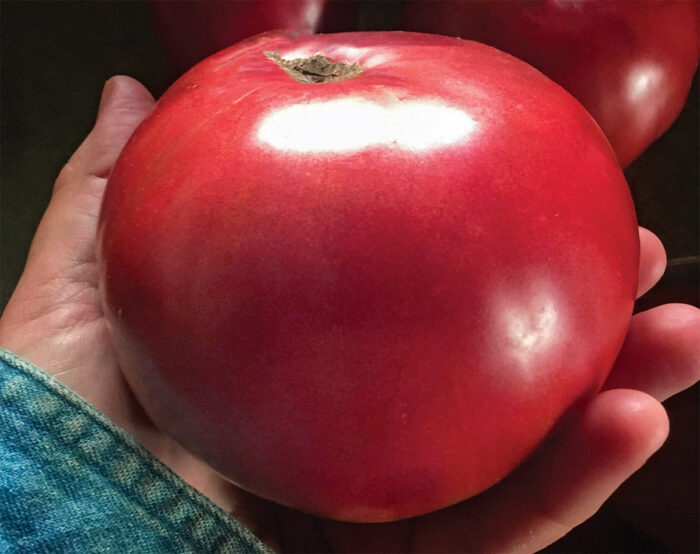
Tomatoes are a favorite crop of many home gardeners, who love the fresh flavor and variety they can achieve when they grow their own. But despite the overwhelming number of varieties available, it is easy to get in a rut, growing the same types year after year.
To help you discover some new tomatoes to try, we asked nine experts from across the country to choose a favorite and then tell us what makes it “the one” for them. The following pages reveal the time-tested treasures and out-of-the-ordinary treats that our experts know and love. We hope you will find at least one that you’d like to try this year.
Plant ‘Thorburn’s Terra Cotta’ tomato for great color and flavor
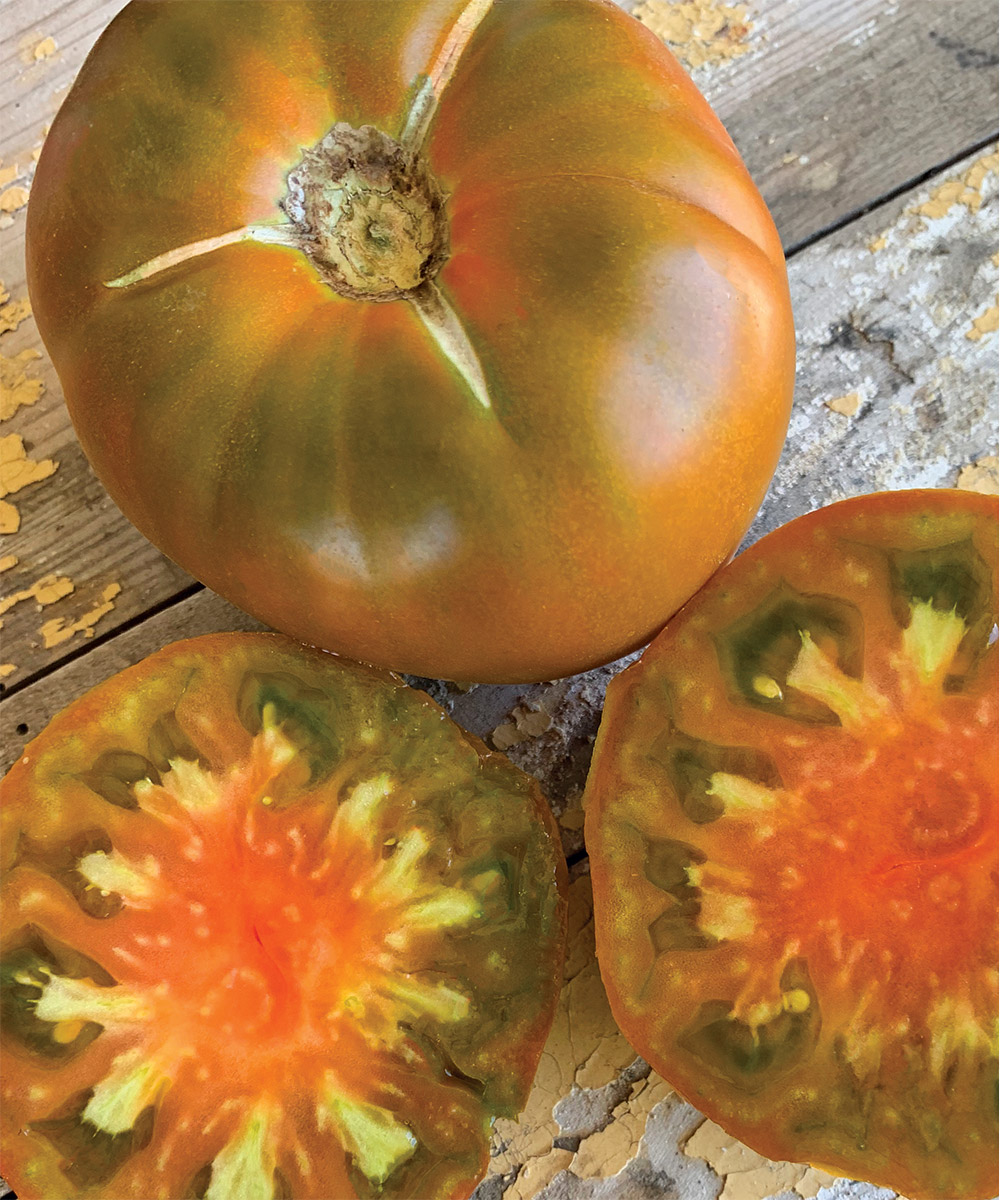
Days to maturity: 75
This delicious and uniquely colored fruit has a terrific story. What more can you ask of a tomato? After being featured in an heirloom seed catalog of the late 1800s, it disappeared for several decades before being found again and resurrected for the seed trade in the 1990s. Terra cotta on the outside, and green, pink, and bronze on the inside, this smaller and often lobed beefsteak is delightful on every level. Its hugely productive plants are also early producers, a plus for many gardeners. Over the years in our growing trials, we found it to be a midsize, indeterminate plant with good disease resistance and sturdy production over a long season.
Tip: Grow on a gridIf you mimic the centuries-old practice of espalier, you can add a unique element to your garden that creates a perfect growing and fruiting situation for your plants. Corral panels, “hogwire,” or concrete reinforcing wire, if supported with upright stakes or posts, can make a sturdy and attractive support. Branches can be guided and spread out over and through the grid as they grow, often with no tying necessary. While cages crush branches together in one bundle, shading lower leaves, grid-growing spreads the plants out, providing more air circulation around leaves and branches. This may help reduce diseases and ensure that a larger percentage of leaves will get optimal sun. To use the vertical space effectively, I alternate smaller or dwarf plants with larger vining ones in the planting scheme. |
The expert: Scott Daigre is the owner and producer of Tomatomania! The World’s Largest Tomato Seedling Sale, a series of events that pop up throughout California in spring.
‘Faelan’s First Snow’ tomato is a classic beefsteak with fun foliage
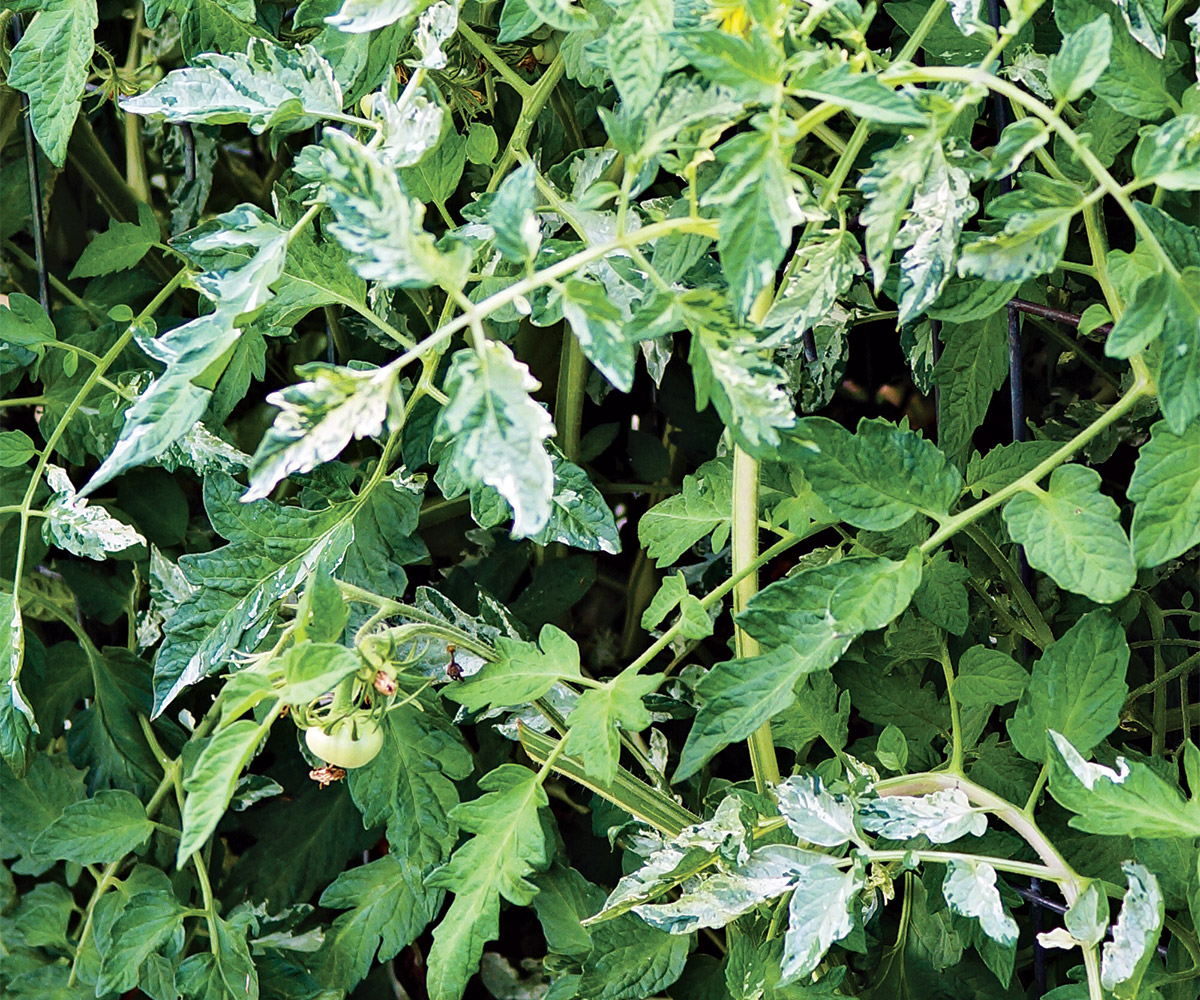
Days to maturity: 80
This was a new variety for me in 2020, and it’s one I look forward to growing for years to come. There is nothing dainty about this indeterminate tomato. It has stout stems; big, white-variegated leaves; large flowers; and huge fruits with a pinkish to purplish-red skin and deep red flesh. As with other variegated tomatoes, the markings on the stems and leaves are most noticeable early on, giving the plants an ornamental feature while the fruits are ripening. The rich flavor is exactly what I expect from a beefsteak-type tomato, and one slice is enough to make a whole sandwich.
Tip: Plan ahead for easy cleanupIf you’ve grown tomatoes before, you know how many self-sown seedlings can pop up the next year. Regularly picking up the dropped fruits is a way to prevent that, but when the fruits are ripening quickly, it can be hard to keep up with harvesting, let alone clean up. I’ve taken to laying down old window screening around the plants, on top of the mulch. It lets the water through, and you can easily lift it up to pull out weeds, but it keeps dropped fruits from adding their seeds to the soil. At the end of the season, scrape off any remaining residue and put the screen away for next year. |
The expert: Nancy Ondra is the author of more than 15 gardening books. She lives and gardens in Bucks County, Pennsylvania.
‘Alston Everlasting’ tomato is a high-yielding heirloom
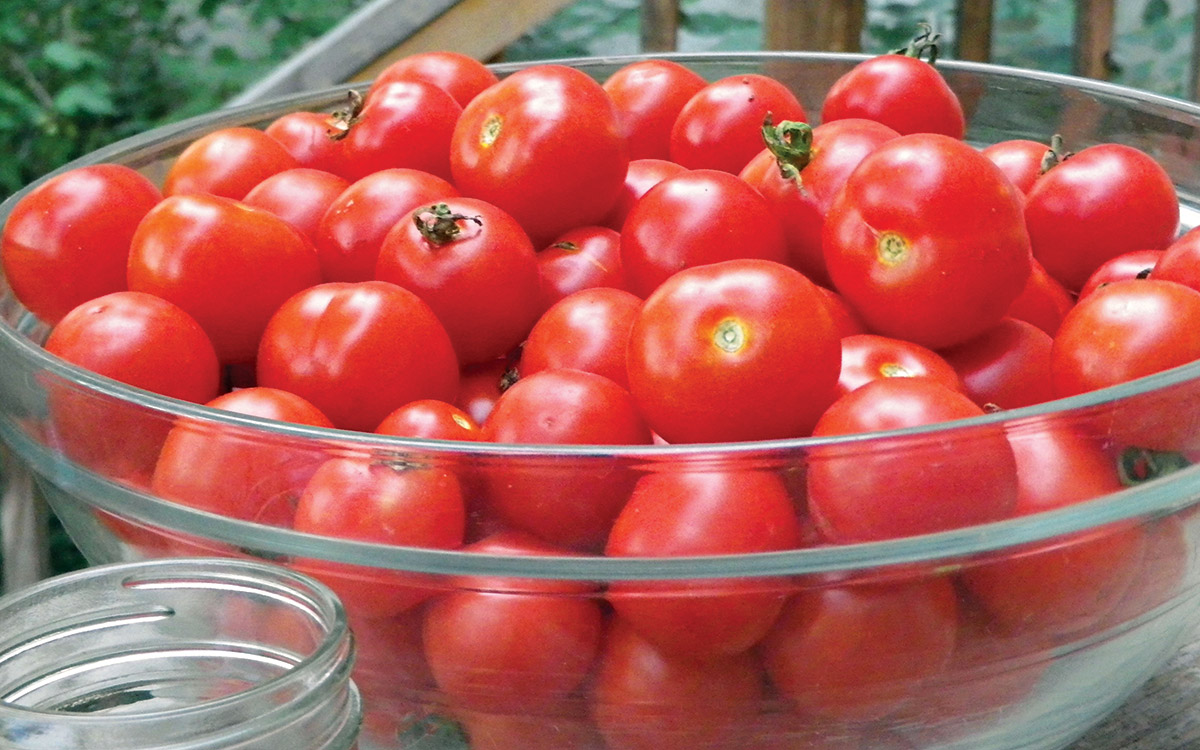
Days to maturity: 65
If I could only grow one tomato (which is a sad thought; I hope it never happens), it might be ‘Alston Everlasting’. This large cherry tomato, almost a saladette, is so versatile. It’s perfect for salads or making oven-roasted sauce with a late-season harvest. I really appreciate a tomato that is good both early and late in the season. ‘Alston Everlasting’ was a popular favorite at Monticello’s Heritage Harvest Festival tomato-tasting a couple of years ago. I especially appreciate that this indeterminate variety is easy to grow and deliciously fresh, cooked or dried.
Tip: Apply mulch right after plantingBetter still, transplant directly into a 3-inch layer of mulch, such as shredded leaves, weed-free hay, or clean straw. The mulch helps in many ways. It prevents the spread of soil-borne diseases, suppresses weeds, and helps the soil retain moisture so you don’t have to water as often. |
The expert: Ira Wallace is a worker and owner at the cooperatively managed Southern Exposure Seed Exchange and a member of Acorn Community, which farms over 60 acres of certified organic land in Central Virginia.
‘Juliet’ tomato is versatile and disease resistant
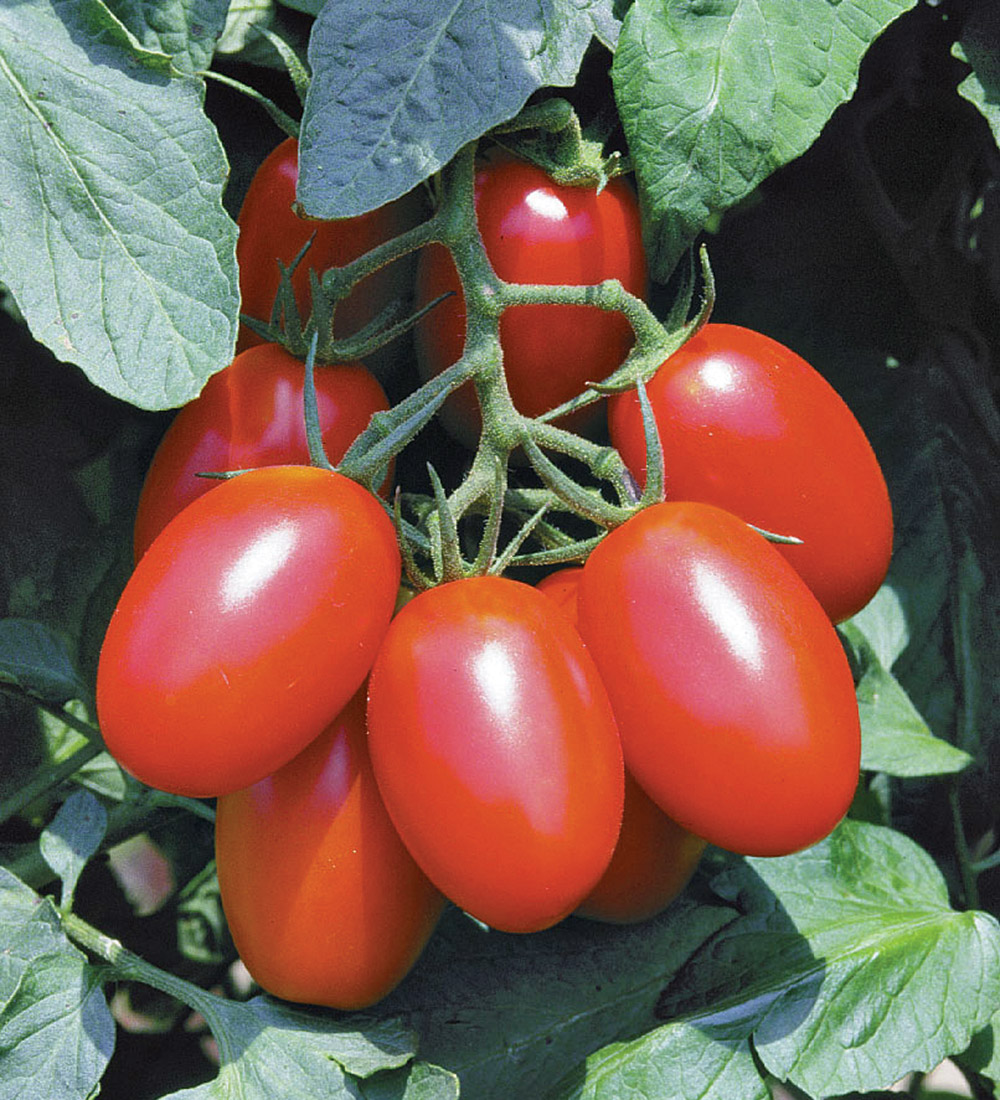
Days to maturity: 60
An excellent multipurpose variety, ‘Juliet’ is as great for eating out of hand during weeding breaks as it is in salads and salsas. I’ve also used it often in pasta sauces along with paste tomatoes to add a little pizzazz. It has a nice, rich texture and is meaty and moderately juicy. The crack-resistant fruits grow in clusters of 12 to 18 on indeterminate vines that must be staked. Best of all, the plants are resistant to early blight, which is the nemesis of tomatoes grown in the Northeast. This disease kills many tomatoes in late summer and early fall. ‘Juliet’ keeps producing till frost and is also resistant to late blight.
Tip: Don’t plant too earlyWait till the temperatures have settled down and all danger of frost has passed before putting your seedlings in the ground. If you plant too early, the plants may be subjected to stress or may even be damaged or killed by frost. Crops planted when the weather is settled are exposed to less stress and often catch up to earlier planted crops. |
The expert: Steve Bellavia is a vegetable researcher at Johnny’s Selected Seeds in Winslow, Maine.
For tiny, tasty treats, try ‘Candyland Red’ tomato
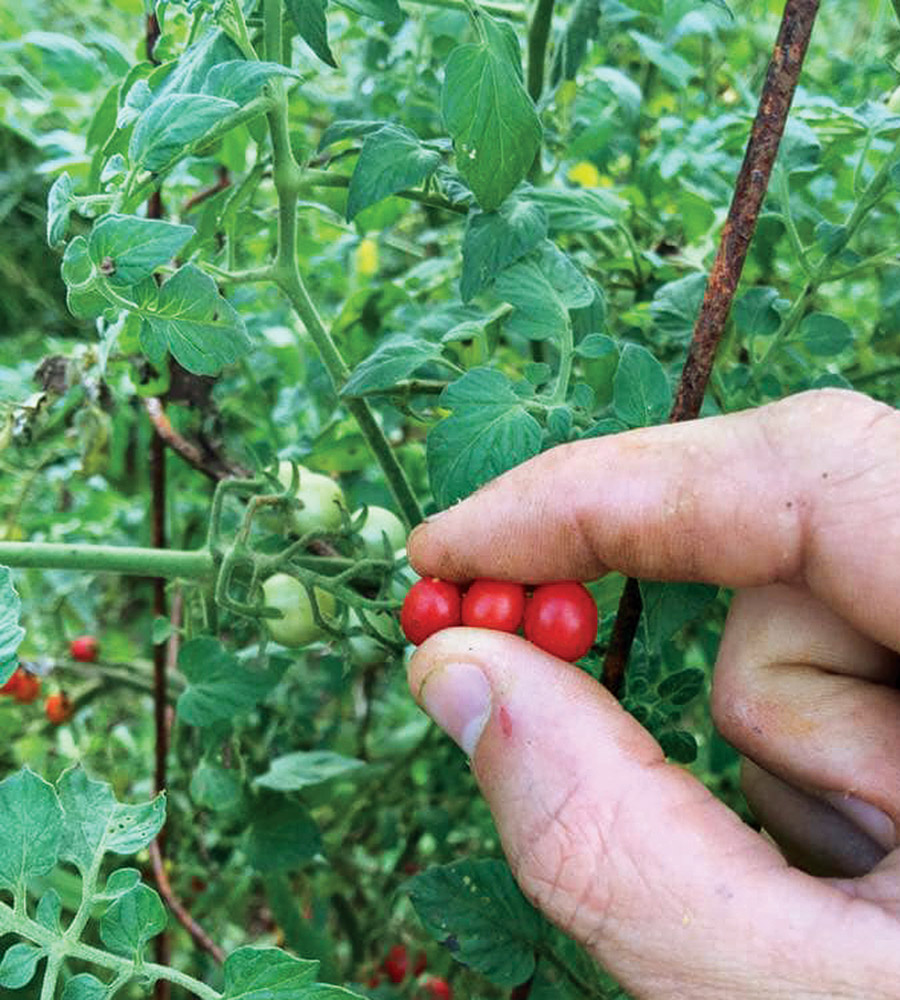
Days to maturity: 55
‘Candyland Red’ is not your average cherry tomato. This currant type produces some of the smallest fruit I’ve ever seen. The fruit grows in clusters, which allows for easier harvest: simply run your hand down each cluster, and all the ripe fruits will fall off into your hand. Although these tiny tomatoes grab attention, their flavor is my favorite feature. Add to pasta or to a sauce after it’s cooked for little pops of tomato flavor
I haven’t noticed any major diseases on this cultivar, and the harvests are enormous. One plant would be enough for a small family. This indeterminate tomato needs staking to support its rambling vines.
Tip: Use waste wool as mulchPurchase cull wool from a local sheep farmer. This is an excellent weed barrier under tomatoes. I generally place wool around the plants when they are small. When rain hits it, the fibers lock together to form a felted mat that is impenetrable to weeds but still allows water to soak through. It’s completely organic and breaks down into the soil during the winter. We have been using wool for a couple of years, and it has been fantastic. |
The expert: Lucas Holman is a horticulture extension agent in Wilson County, Tennessee.
Flavorful ‘Sungold’ tomato is a fan favorite
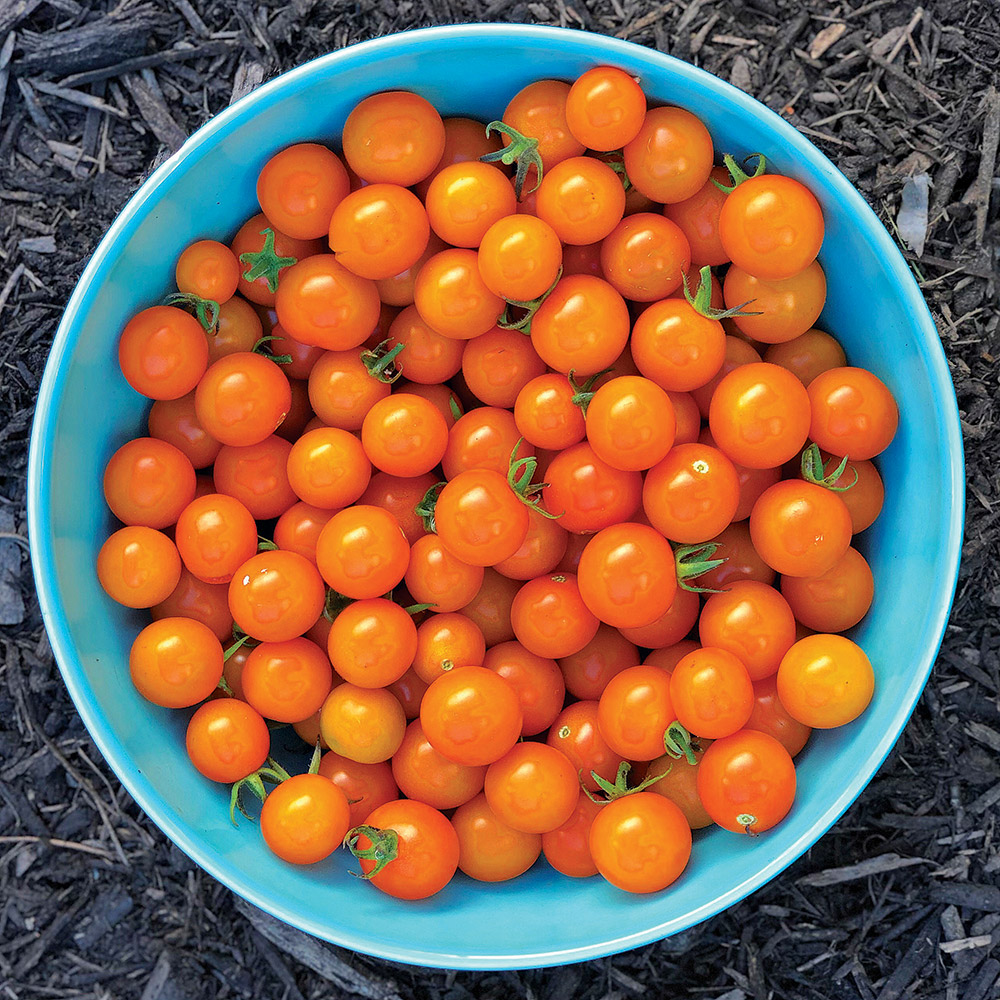
Days to maturity: 57
I grow dozens of tomato varieties each summer, but only ‘Sungold’ has a guaranteed spot in my garden. Why? Flavor! Its exceptionally sweet and fruity flavor has made it one of the most popular cherry tomatoes in cultivation, and no one who visits my garden can resist sampling those golden-orange fruits. The indeterminate plants are vigorous and ridiculously productive, yielding hundreds of 1-inch-diameter fruits from midsummer until frost. It also offers excellent resistance to common diseases such as verticillium wilt, fusarium wilt, and tobacco mosaic virus. ‘Sungold’ is always the first tomato ready in my garden. Once the plants start to crop, I stay on top of the harvest, as over-mature fruits may split.
Tip: Prune for healthier, more productive plantsPruning is an easy way to maximize production and improve air circulation, which reduces disease risk. Here’s how to do it:
|
The expert: Niki Jabbour tends a 3,000-square-foot urban vegetable garden in Halifax, Nova Scotia, and is the author of Niki Jabbour’s Veggie Garden Remix.
‘Midnight Snack’ tomato is productive over a long season
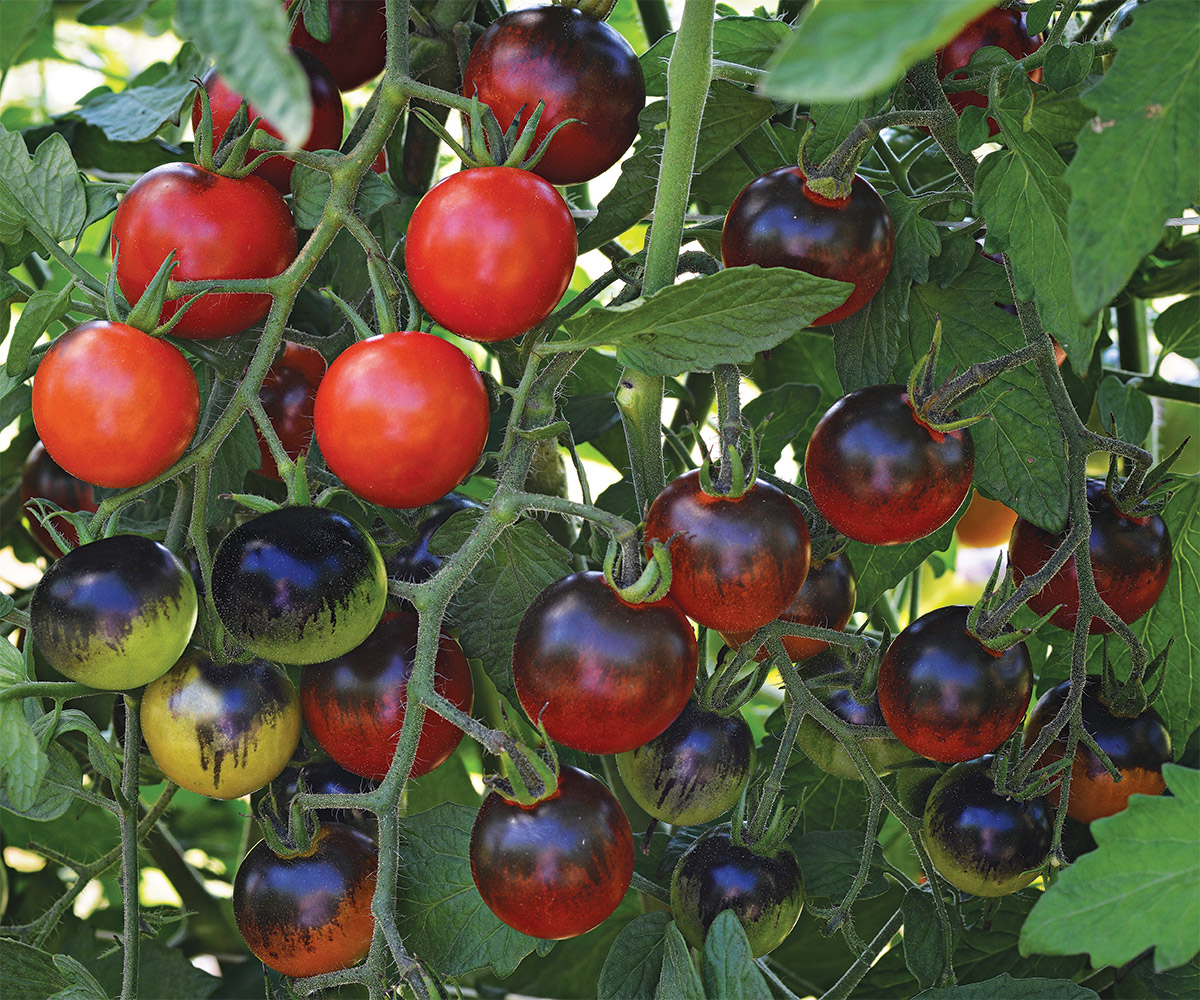
Days to maturity: 65 to 70
Since I first started growing it in 2017, the same year it was awarded the prestigious All-America Selection Winner designation, ‘Midnight Snack’ has continued to be an excellent performer. This Indigo-type cherry tomato starts out green and becomes a gorgeous, glossy, black-purple color. Once the fruit matures and begins to ripen, the bottom half to two-thirds becomes red while retaining the dark overlay on the top. Plants are indeterminate and very productive, each yielding well over 100 individual 1-1/2-inch fruits. Production starts early and keeps going into fall. The fruits are meaty with a well-balanced savory-sweet flavor. Not only are these snack-size cherry tomatoes tasty, but they are also nutritional powerhouses! The purple color comes from the accumulation of anthocyanin pigments, which are packed with healthy antioxidants. For the best color development, give ‘Midnight Snack’ full sun, and don’t crowd individual plants. The plants will reach 5 to 6 feet tall and should be staked or caged for support.
Tip: Build a better cageDon’t waste your time on the widely available but often ineffective three- or four-ring wire cages. Instead, make your own sturdy, durable cages using galvanized fencing from a farm supply or home-improvement store. Make sure the fencing you choose is at least 5 feet tall and has openings large enough for your hands to pass through easily when you harvest; 5- or 6-inch-square openings are perfect. A length of wire cut 8 feet long will make a cylindrical cage about 30 inches in diameter. To fasten the ends together, cut each horizontal wire in the middle of a square, and wrap the loose ends around the vertical wire on the other side. |
The expert: Jason Reeves is a horticulturist at the University of Tennessee Gardens Jackson and a Fine Gardening contributing editor.
Choose ‘Rapunzel’ tomato for its trailing trusses
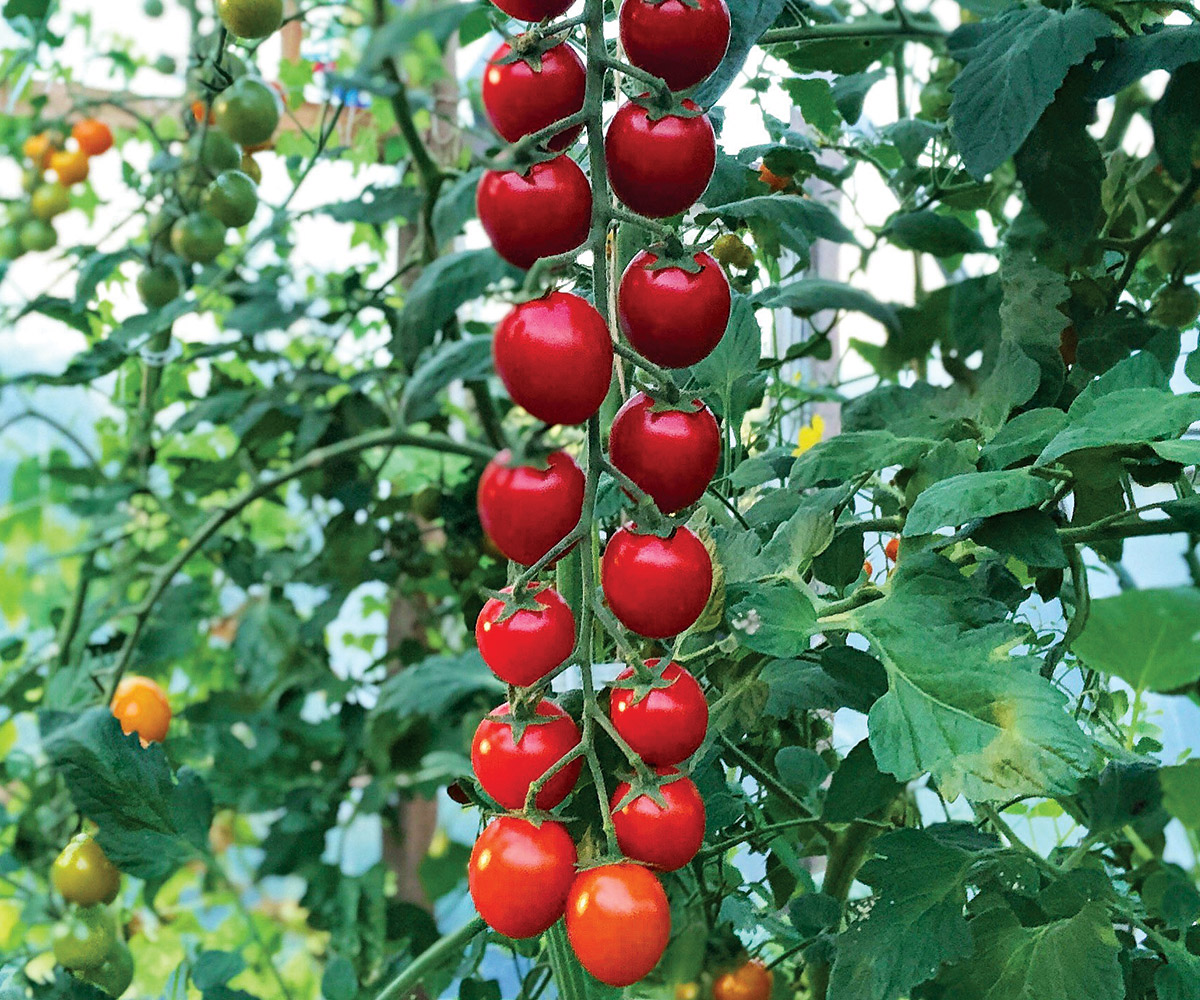
Days to maturity: 70
This beautiful plant produces long, cascading trusses of cherry tomatoes all season long. A single truss can grow up to 2 feet long and hold as many as 40 individual fruits. This is an adaptable, indeterminate variety that can even be grown in a large container, but be sure to give it some support since its vines can reach up to 6 feet tall. Easy to care for and always dependable, ‘Rapunzel’ would be a wonderful addition to any vegetable garden.
Tip: Go deepPlant tomato seedlings deeply so that soil covers the stems up to the second set of leaves, or lay the lower stem sideways in a trench and cover with soil. The plant will develop roots along the covered stem sections, and more roots mean a stronger and more stable plant. |
The expert: Sheila Flinchpaugh is a horticulturist at Missouri Botanical Garden in St. Louis.
‘Cream Sausage’ tomato delivers plentiful, pale yellow fruit
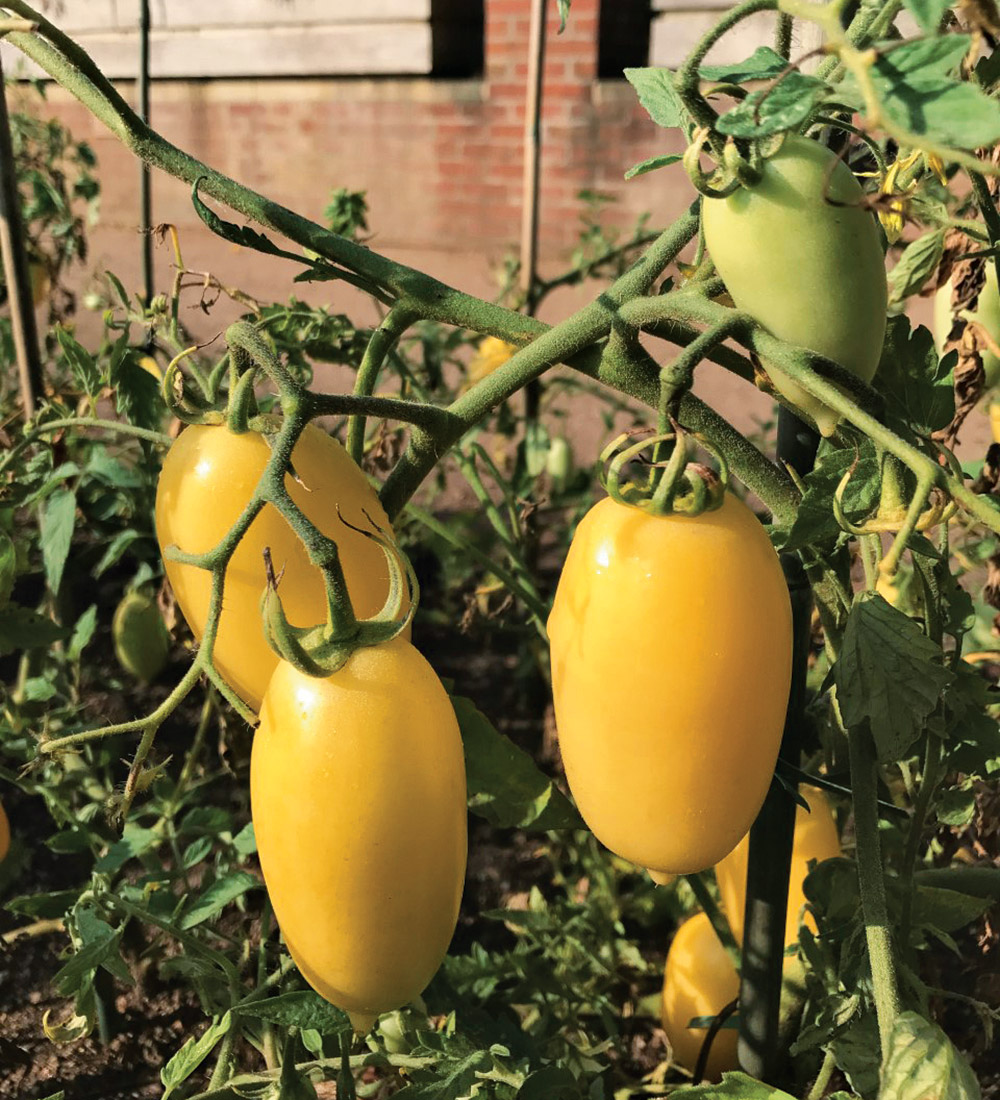
Days to maturity: 75 to 80
Over the years I’ve probably grown over 400 different tomatoes for display at the Chicago Botanic Garden, so selecting just one tomato is difficult. Forgive me, ‘Black Cherry’ and ‘Pink Berkeley Tie-Dye’, but ‘Cream Sausage’ wins out. This dependable producer delivers loads of exhibit-worthy fruit on trouble-free plants. Its delicious, nearly-white fruit stays blemish-free and resist cracking. This is an open-pollinated paste tomato bred for determinate growth and a concentrated fruit set, although in my experience it tends toward being semi-determinate. It seems impossible to stake or cage, so we grow it in the sprawl culture, a professional way of saying, “Without support.” The fruit set is early, and a single plant can produce up to 60 pounds of tomatoes. As a bonus, it is resistant to verticillium wilt, fusarium wilt, and tobacco mosaic virus.
Tip: Get the watering right
|
The expert: Lisa Hilgenberg is the head horticulturist of the Regenstein Fruit and Vegetable Garden at the Chicago Botanic Garden.
Sources
- Johnny’s Selected Seed, Winslow, ME 877-564-6697; johnnyseeds.com
- Park Seed Co., Hodges, SC 800-845-3369; parkseed.com
- Reimer Seeds, St. Leonard, MD reimerseeds.com
- Seed Savers Exchange, Decorah, IA 563-382-5990; seedsavers.org
- Sherwood’s Seeds, Levittown, PA sherwoodsseeds.com
- Southern Exposure Seed Exchange Mineral, VA; 540-894-9480 southernexposure.com
Fine Gardening Recommended Products

D&X Garden Sprinkler
Fine Gardening receives a commission for items purchased through links on this site, including Amazon Associates and other affiliate advertising programs.
- 12 flexible nozzles that you can set in any direction, simply bend hoses to customize new watering patterns - 360 degree coverage of 3000 sq. ft area
- 3.5 x 4 x 6 inches

XLUX Soil Moisture Meter
Fine Gardening receives a commission for items purchased through links on this site, including Amazon Associates and other affiliate advertising programs.
- Simply insert the moisture meter into soil and you'll get the test result instantly
- Single probe, less hurts to the roots, doesn't dig up too much soil after test

Razor-Back Potato/Refuse Hook
Fine Gardening receives a commission for items purchased through links on this site, including Amazon Associates and other affiliate advertising programs.






Comments
test
Log in or create an account to post a comment.
Sign up Log in